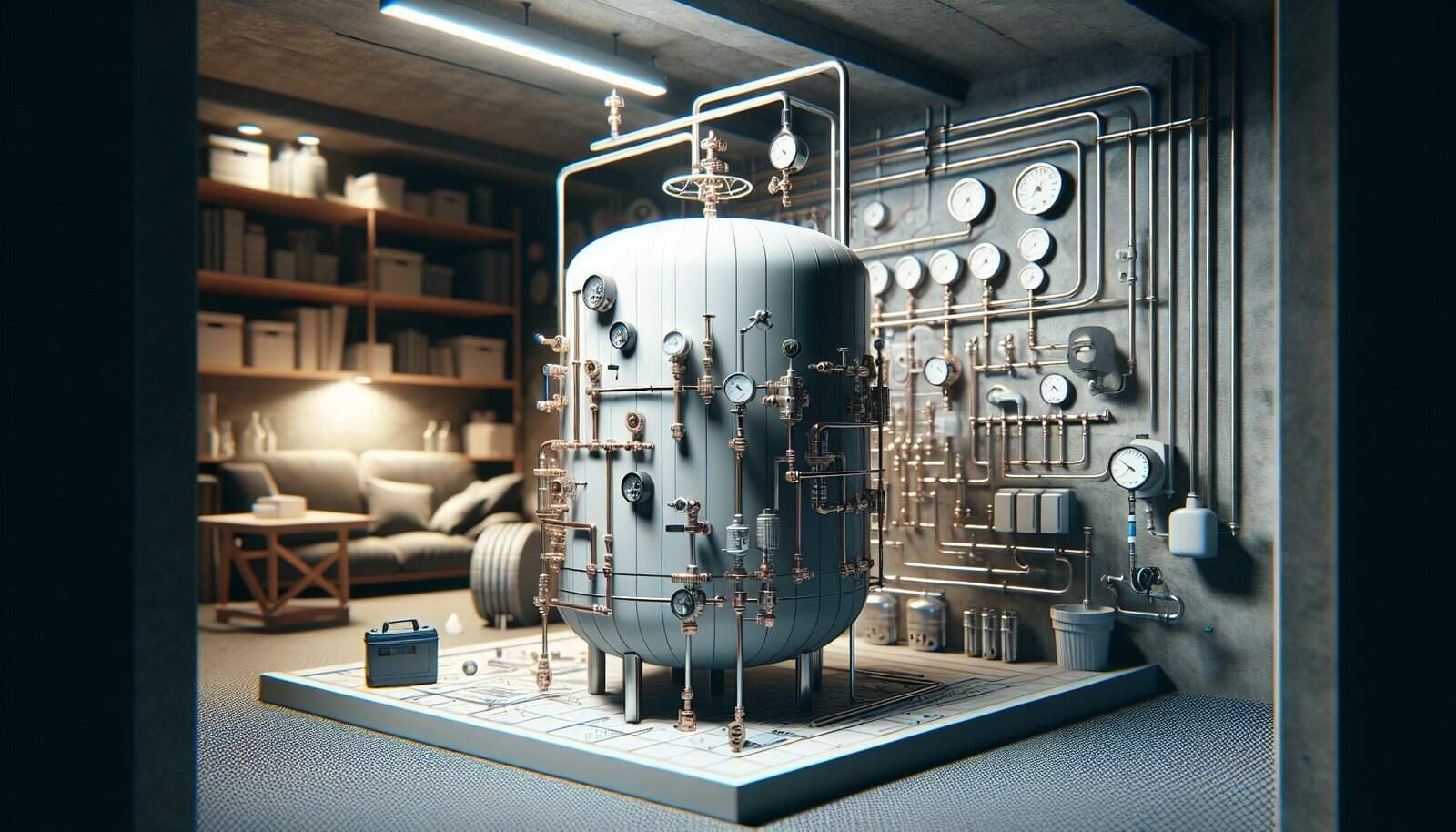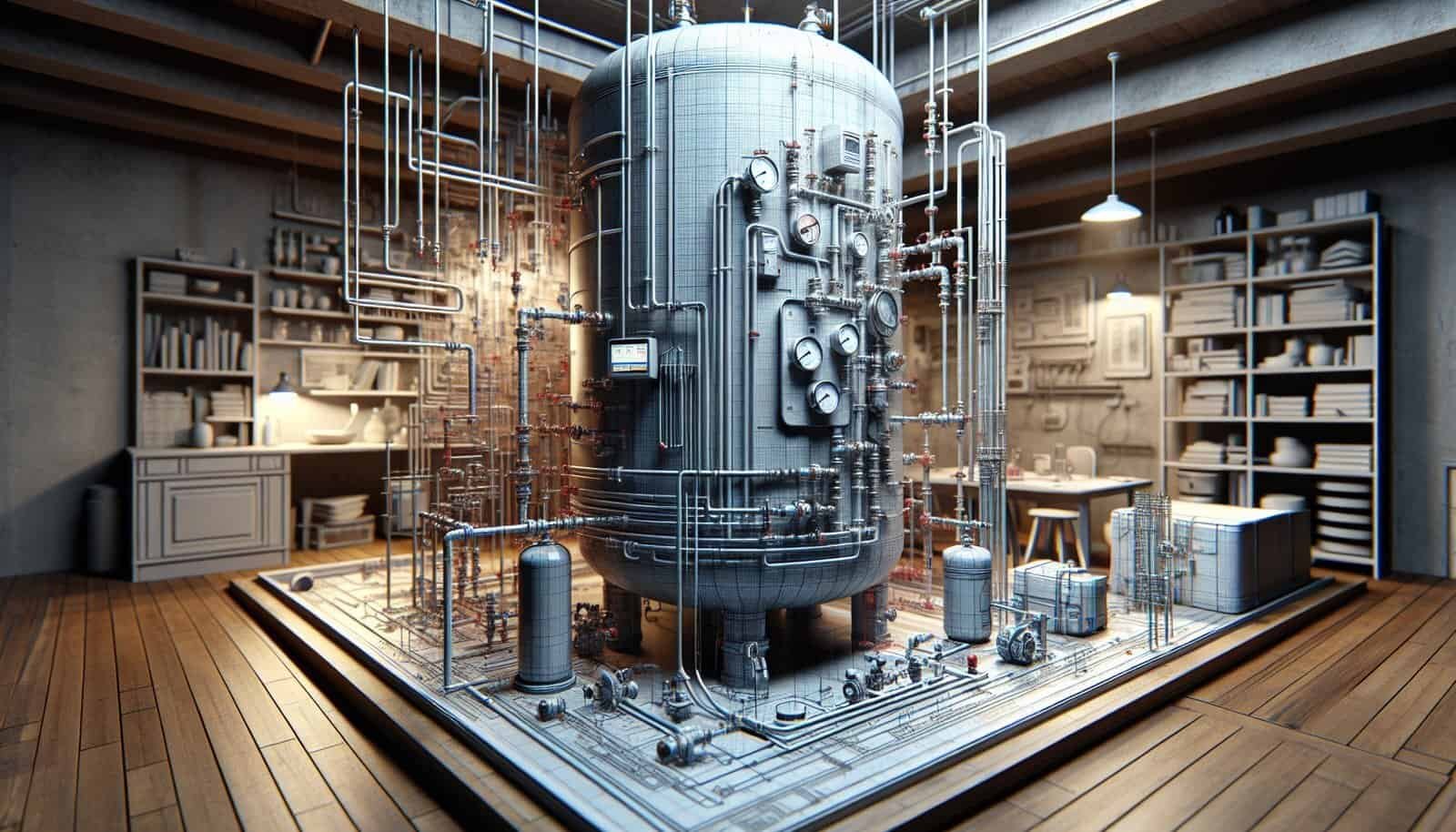Have you ever wondered if your pressure tank is operating safely? Maintaining a pressure tank is crucial for ensuring a steady water supply in your home. However, knowing when your system might be faltering or might need maintenance isn’t always intuitive. Let’s discuss how you can identify signs that your pressure tank might require attention and what measures you can take to ensure it continues to function safely.

Understanding Pressure Tanks: What Are They?
A pressure tank plays a vital role in supplying water through your plumbing system. It works by storing water and utilizing air pressure to deliver that water through your pipes when needed. By doing this, it helps regulate your water pressure, keeping it at a consistent level and preventing your water pump from running continuously whenever you use water in your home.
How Do Pressure Tanks Work?
The inside of a typical pressure tank is divided into two sections: one filled with water and the other with air. An air bladder or diaphragm separates these sections. When your pump fills the tank with water, the air in the upper chamber becomes compressed. This air pressure helps push water through your pipes once you open a tap. When water flows out, the pressure decreases, triggering the pump to refill the tank.
Types of Pressure Tanks
While there are different types of pressure tanks, they mainly fall into three categories:
- Diaphragm Tanks: Feature a rubber diaphragm that separates water from air.
- Bladder Tanks: Contain a balloon-type bladder that holds the water.
- Conventional Steel Tanks: Lack a bladder or diaphragm, relying on air-to-water interaction.
Each type has its benefits and drawbacks, which can affect maintenance needs and longevity.
Signs Your Pressure Tank Might Be Failing
Understanding the signs of a failing pressure tank can help you resolve issues before they escalate into significant problems. You can look for several warning signs to determine whether your pressure tank is operating safely.
Short Cycling
Short cycling occurs when your water pump turns on and off frequently. This is often due to low air pressure in the tank causing the pump to engage more often than it should. It’s a common issue and can lead to premature pump failure and increased energy costs.
Inconsistent Water Pressure
If you notice that your water pressure fluctuates while you’re using a tap, it could mean that your pressure tank is struggling to maintain consistency. This might stem from a leak in the diaphragm or a faulty pressure switch.
Permanently Running Water Pump
A pump that fails to turn off is an indication that there’s a significant problem, such as a waterlogged tank, where the air has leaked out, or issues with the pressure switch. This can lead to overheating and damage to the pump.
Visible External Damage
Regularly inspect your pressure tank for any visible signs of wear and tear, such as rust, dents, or corrosion. These signs can signal weak points that might lead to a malfunction.
Strange Noises
Hearing any unusual noises, such as banging or gurgling, from your pressure tank can indicate possible issues. These sounds might result from trapped air or water hammer, which could stress your system and lead to damage over time.

Rusted Pipes: Could They Compromise Water Safety?
Rusted pipes are often a silent saboteur, leading to decreased water quality as well as pressure tank inefficiencies. Let’s explore how rusted pipes could impact your overall water system.
How Rust Affects Water Safety
When pipes rust, they can corrode internally, causing flaking or scaling that reduces the water quality. This scale can sometimes break off and enter your water supply, potentially causing issues such as discoloration or a metallic taste. In extreme cases, rust could introduce harmful bacteria into your system, leading to health concerns.
Impact on Pressure Tank Performance
Rusted pipes can also impact your pressure tank by altering the pressure and flow rate. When pipes are corroded, their diameter effectively decreases, which can create bottlenecks and restrict water flow. Greater demand is then placed on your pump, which has to work harder to maintain pressure, potentially leading to premature failure or increased operational costs.
How to Identify and Address Rust Issues
Inspect your plumbing system for any visible signs of rust or corrosion. Pay attention to any changes in water color or taste that could signal internal corrosion. If you identify rust, consider consulting a professional plumber to assess the extent of the damage and recommend necessary repairs or replacements.

Conducting Routine Inspections and Maintenance
Regular maintenance and inspections are key to ensuring your pressure tank and entire water system remain in good working order.
Regular Pressure Checks
One of the simplest ways to maintain your pressure tank is by regularly checking the air pressure. The air pressure should usually be 2 psi below the cut-in pressure for the pump. If it’s lower, consider replenishing the air bladder with a proper air pump.
Inspecting for Leaks
Consistently check your system for leaks, whether in the tank itself or in connected pipes. Leaks not only reduce efficiency but also increase water bills and can cause damage over time.
Material Durability
Understand the material your pipes are constructed from and how it withstands time and elements. Copper, PVC, and PEX typically resist corrosion well, whereas galvanized steel is more prone to rust. If your system is old or uses susceptible materials, it might be prudent to consider replacing parts before they fail.
Scheduling Professional Check-Ups
Even with diligent personal inspections, having a water system specialist assess your setup periodically can catch problems you might overlook. Professionals can evaluate your system comprehensively and suggest improvements or repairs as needed.

Taking Precautionary Measures for Enhanced Safety
Beyond regular inspections and maintenance, certain actions can bolster the security and effectiveness of your water pressure tank system.
Installing a Pressure Relief Valve
A pressure relief valve can be measured in protecting your system against excessive pressure build-up, which might otherwise lead to significant damage or even catastrophic failure. This small investment can prevent costly repairs down the line.
Water Treatment Solutions
If rust or mineral build-up is a concern, water treatment options such as softeners, filters, or descalers can help preserve the integrity of your pipes and pressure tank. These methods can reduce deposits and improve overall water quality.
Upgrading Outdated Systems
If your pressure tank or accompanying pipes are nearing the end of their lifespan or frequently require repairs, consider investing in an upgrade. A modern system can improve efficiency, reduce operating costs, and provide lasting peace of mind.

Conclusion: Ensuring Safety and Longevity
Maintaining your pressure tank and entire water system is critical to ensuring its proper function and your family’s health. By understanding how your system works, identifying potential red flags, and consistently conducting maintenance, you can help prevent issues such as rusted pipes or tank malfunctions. Adopting a proactive approach and being vigilant about your system’s condition will ensure it continues to operate safely and reliably for years to come.
